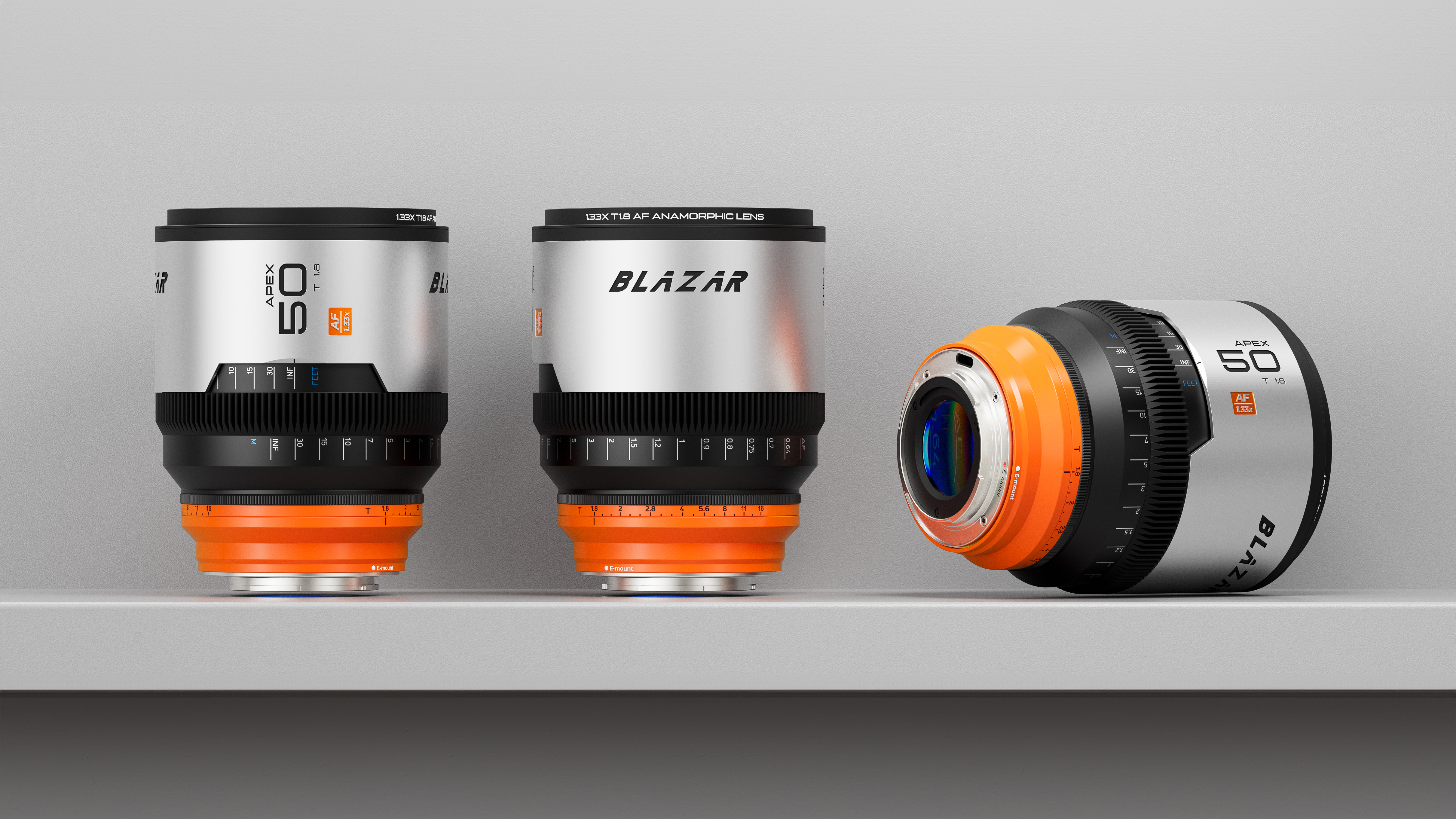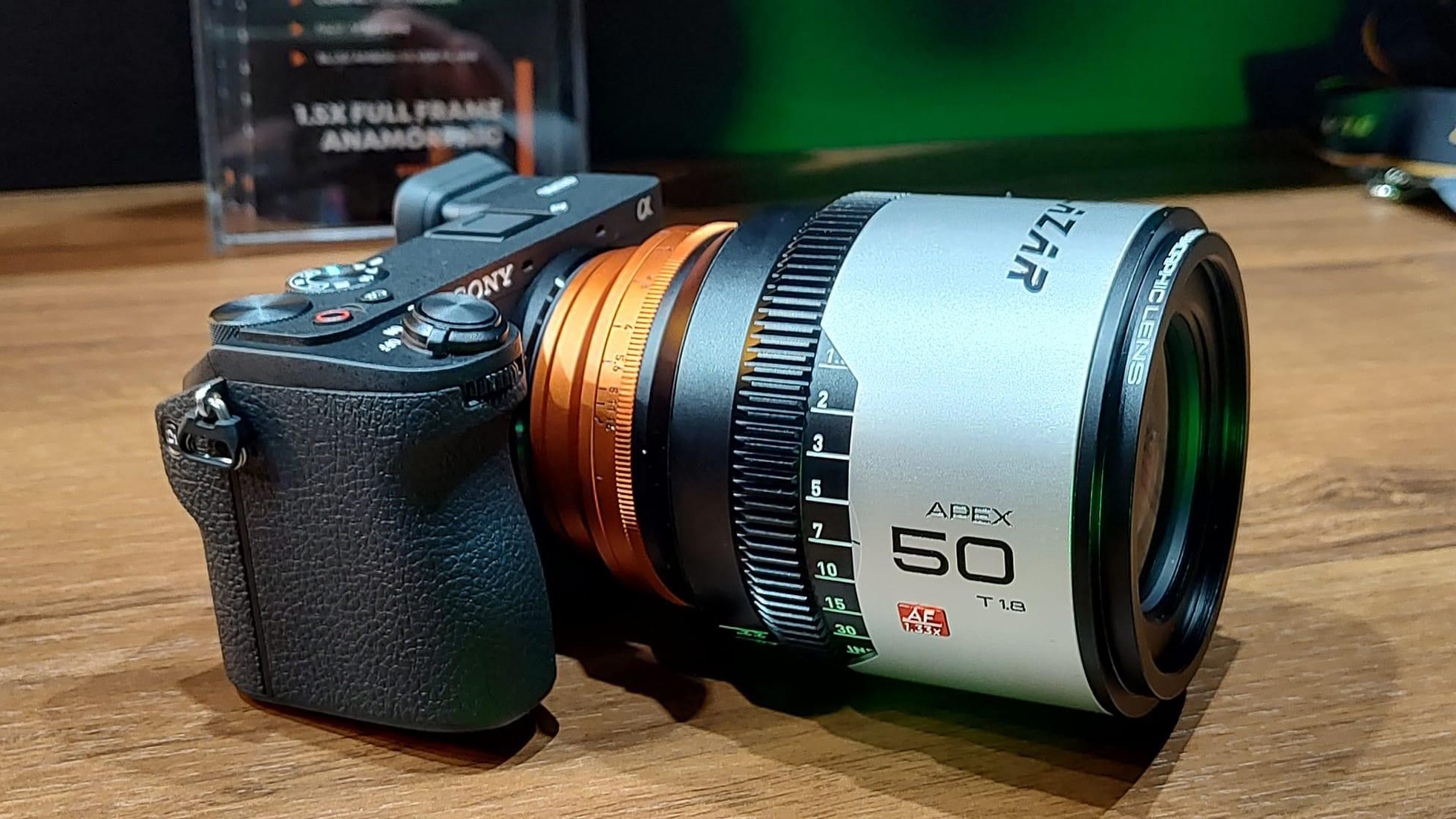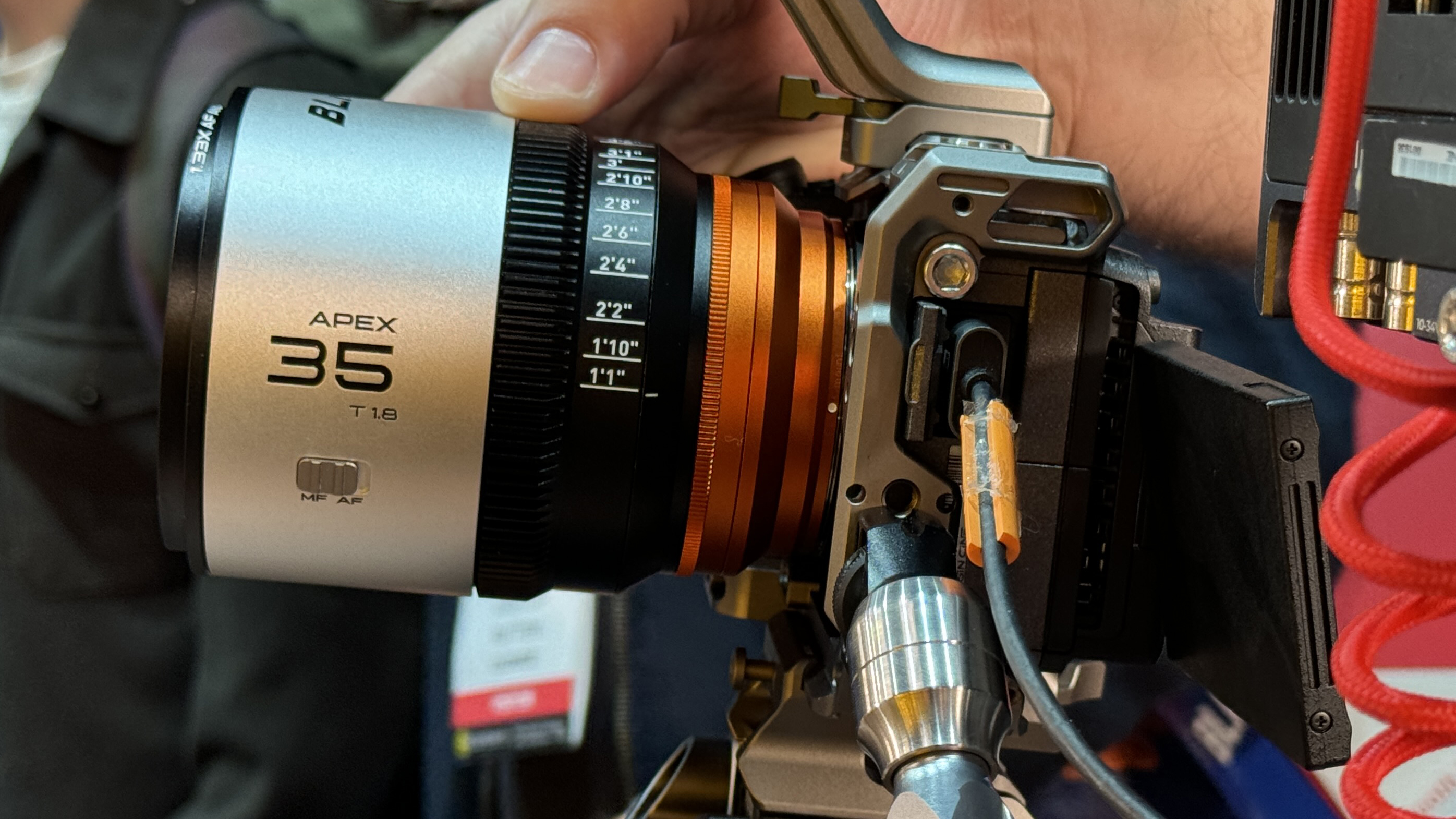
At IBC 2024 in Amsterdam, Blazar Lens unveiled what they are heralding as the world’s first autofocus anamorphic lenses.
The innovative 1.33x APEX series, currently in its prototype phase, drew considerable attention at the event. Blazar showcased two focal lengths, a 35mm T1.6 and a 50mm T1.8, both designed to cover the Super 35 (S35) sensor.
These lenses are slated to be available in several mirrorless mounts, including Sony E, Nikon Z, Leica L, and Fuji X, with discussions ongoing about a Canon RF mount option in the future.

Blazar's choice of a 1.33x squeeze ratio for its anamorphic lenses is driven by practical considerations. Autofocus systems, the company found, struggle with wider anamorphic squeeze ratios, making the 1.33x a more feasible option.
This ratio not only improves autofocus performance but is also compatible with 16:9 sensor cameras that lack anamorphic recording modes. While the 1.33x squeeze may not deliver the pronounced anamorphic look of 1.5x or 2x ratios, Blazar claims its Apex lenses achieve a similar aesthetic to 1.5x options.
The 1.33x anamorphic format presents a compelling choice, particularly for affordable anamorphic lenses. Compared to 1.8x or 2x lenses, the 1.33x design is more versatile and easier to produce, with fewer optical compromises. It allows users to capture a wider aspect ratio without cropping, thereby maximizing image resolution. This adaptability makes the Apex series a practical option for a range of cameras with S35 sensors.

Currently, the market for 1.33x anamorphic lenses is limited when compared to other lenses on the market, but notable examples include the Viltrox Epic series, Sirui 1.33x, Slr Magic 1.33x Anamorphot-CINE, and the Hawk 1.3x. However, many of these options do not fully cover full-frame sensors, although the SLR Magic 50mm and 75mm do.
Samyang recently introduced an anamorphic front-mounted adaptor for its V-AF range of full-frame autofocus cine lenses, but this offers a 1.7x squeeze.
The Blazar Apex lenses' ability to cover full-frame and S35 sensors positions them as a versatile solution for many 16:9 sensor cameras.







